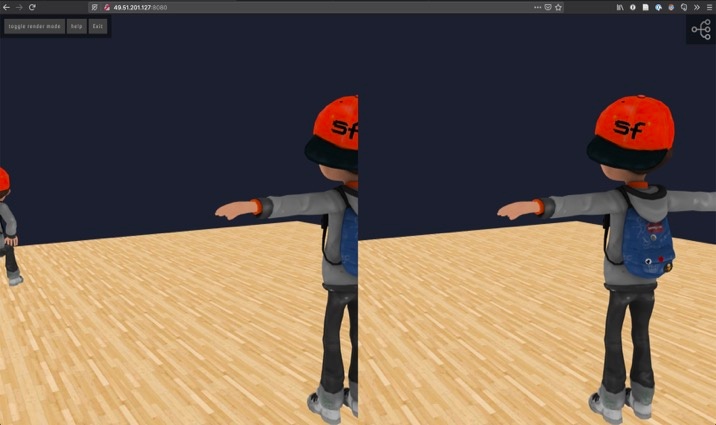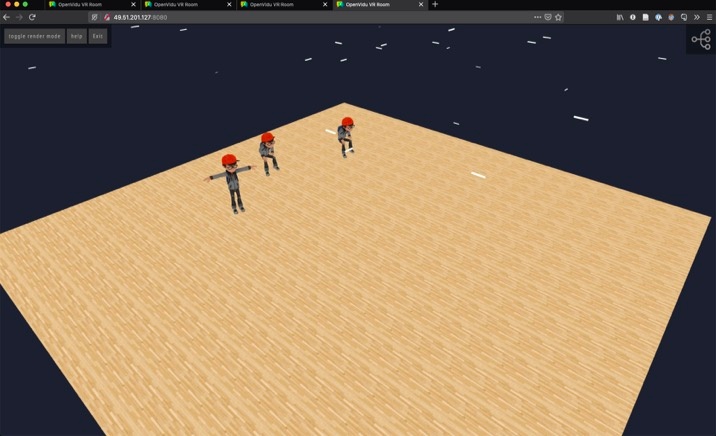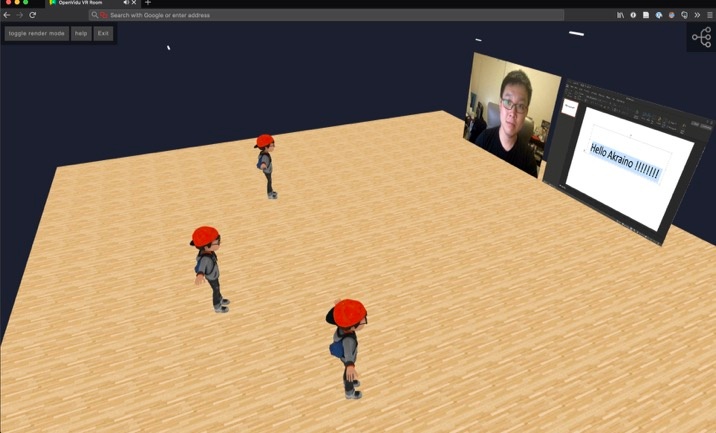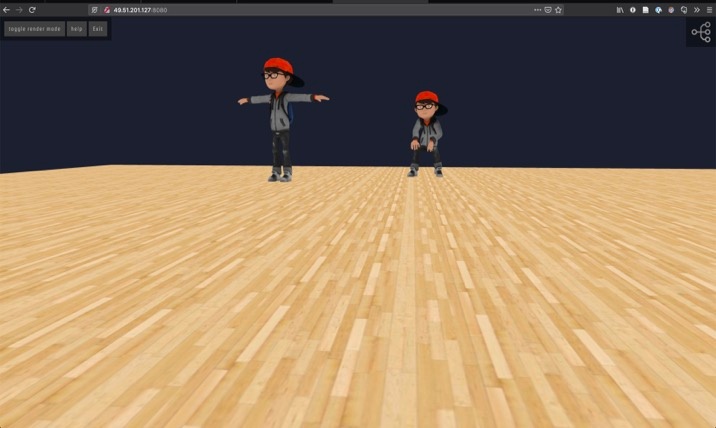...
In general, the architecture consists of three layers: Iaas(IEC), PaaS(Tars), SaaS(AR/VR Application).
Use Cases
In general, there are multiple use cases for AR VR itemized below. For Release 2, we focus on building the infrastructure and virtual classroom application (Highlighted in dark purple color).
...
After successfully deploy the virtual classroom application, the following virtual classroom is waiting for you. Enjoy!
Overall Architecture
The whole architecture, shown below, consists of two parts: the front end and the backend.
- For the front end, the minimal requirements are two clients, one for the teacher and the other one for the student. The client device could be a cellphone, tablets, wearable devices,personal computers, etc. The client collects information from the real world and transfers the data to the backend for calculation. Beyond data transfer and calculation, render is another function running on the front end client-side.
- For the backend, we deploy the backend in two virtual machines in the Cloud.
- To make the VR backend work well, we deploy IEC in the IaaS Layer, Tars framework in PaaS Layer, Virtual Classroom Backend in SaaS Layer.
- To make CI/CD available, we deploy Jenkins Master in one Virtual Machine. The Jenkins master issues command to triger the script run on the dedicated VM.
Tars is a high-performance microservice framework based on name service and Tars protocol, also integrated administration platform. For more information about Tars, refer to the following documents:
...
IEC Release Type2 Documentation
Optimization
To address the requirements of time-critical Application, some optimizations are itemized below:
...
- Lightweight framework
- To make Tars can be well deployed on the edge computing platform, we make the framework pluggable. The customer plugin the pluggable components when we really need it. Unnecessary components can be avoided.
- Rewrite some functions(like scale-out, monitor and so on) to reduce CPU consumption.
- Orchestrate no-urgent functions(like monitor data calculation and so on) from edge to DC(or higher level edge). Reduce resource consumption.
- IEC Optimization: IEC uses Calico as the main container networking solution which uses a pure IP networking fabric to deliver high-performance Kubernetes networking, and its policy engine enforces developer intent for high-level network policy management. Together, Calico and Kubernetes provide a secure, cloud-native platform that can scale your infrastructure to support hundreds of thousands of users. Calico CNI also supports multi-cni plugin. In this way, users can customize their own edge systems.
Main Progresses for Release 2
Release 2 is the first release for IEC Type 4. So everything is new.
Build Of Materials (BOM) / Hardware requirements
For R2, we deploy IEC in Tencent Cloud for Release. The detailed hardware is itemized below:
...




